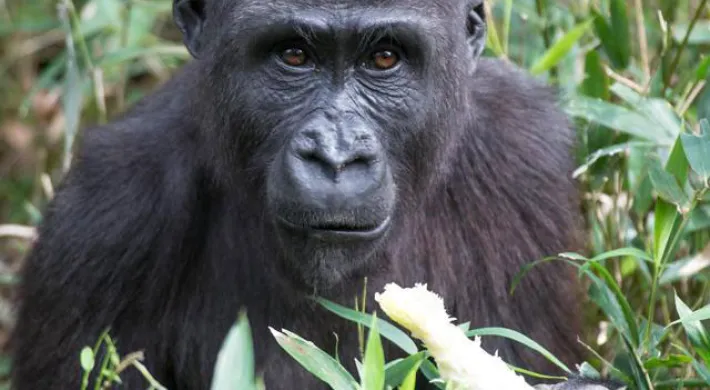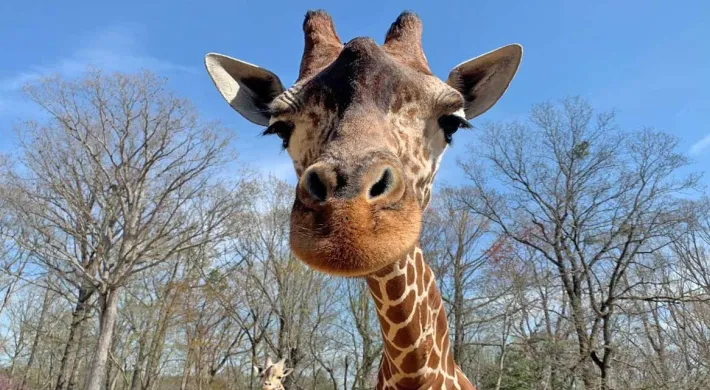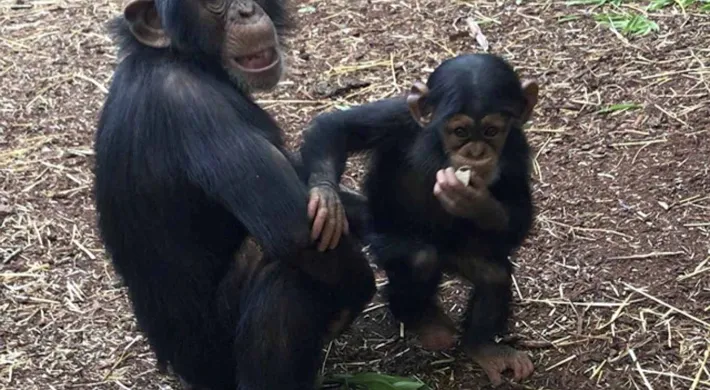Written by Jon Saunders, Animal Commissary Supervisor, North Carolina Zoo
Have you ever tried to feed many mouths before? I have a family of three, and it is a lot of work to ensure everyone is fed and full. Well, can you imagine feeding 1,800 mouths with all different needs of nutrition and dietary restrictions? This sounds like a daunting task, I know, but here in the Commissary at the North Carolina Zoo, we do just that. We have a staff of five full-time employees whose primary goal is to meet each animal's nutrition needs.
Let me put into perspective how much we order each week. We bring in fresh produce from a family-owned local vendor twice a week. Currently, we bring in seven hundred pounds of romaine, four hundred and eighty pounds of sweet potatoes, two hundred and forty pounds of kale, two hundred pounds of green leaf, and many more fruits and vegetables. Also, we bring in (literally!) tons of fish and other meats throughout the year.
Let us look at what a typical day in the Commissary would look like for one of the employees. Each day, we have one employee who only handles the primate's (gorilla, chimp, lemur, baboon) nutrition. They start the day out by getting their station set up with a cart packed full of fresh produce. On top of this, 100 pounds of romaine, 40 pounds of green leaf kale, 20 pounds of green peppers, 45 pounds of green beans, and other produce are brought to this work area. Now the fun begins!
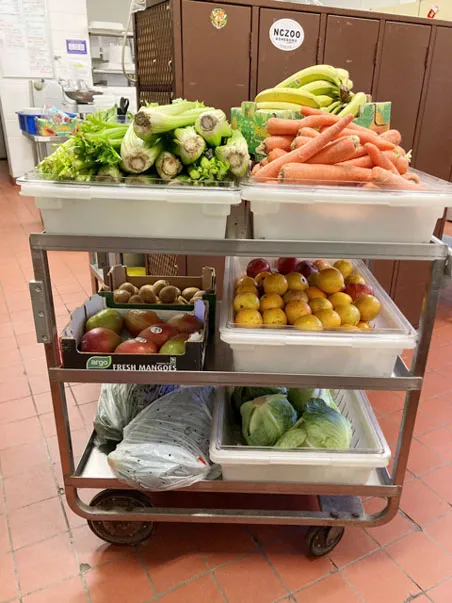
Fruits and vegetables cart
The day will be spent processing large amounts of produce for our different groups of primates. In addition to the produce, the chimps, baboons, and lemurs receive a grain supplement. This comes in 25 to 50-pound bags and is weighed into daily amounts. We have five-gallon buckets of grain for the baboons and the two chimp groups each day. Everything is weighed to exact measurements that are set in place by veterinarians, curators, and keepers.
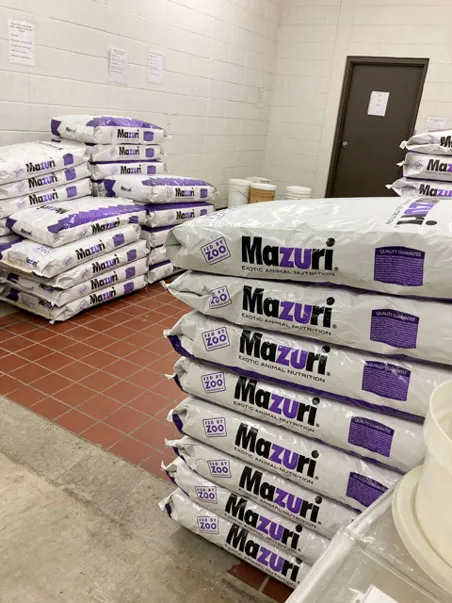
Commissary grain
Once all the primates' nutrition has been completed for the day, the cart is restocked for the next day, and the station is cleaned and disinfected. This is just one staff person's daily routine. Other staff members prepare food for smaller animals such as the skunk, hogs, turtles, birds, etc. One person each day also prepares all the meat nutrition. This requires using a mallet and an ax to cut through large blocks or packages of meat. It is not for the faint of heart!
Late each morning, the staff works together to load our box truck with all the prepared food. It's delivered to each animal section, much like we humans do for our food these days in having our groceries delivered to us or a meal brought by Uber Eats.
When feeding all the various animals here at the Zoo, we must keep a large inventory of different food items. The Zoo has a freezer that is dedicated to fish. We bring in tons of it each year. We also have a freezer full of different rodents and cow bones for the animals. The Zoo receives around three gallons of bovine blood each week to feed our vampire bats. I bet that is not something that you are putting on your grocery order every week! With 1,800 mouths to feed, it takes a lot of planning, organization, and hard work to ensure they all stay happy and healthy. We work together as a team to make sure all the animals receive the most accurate nutrition with the highest quality ingredients.
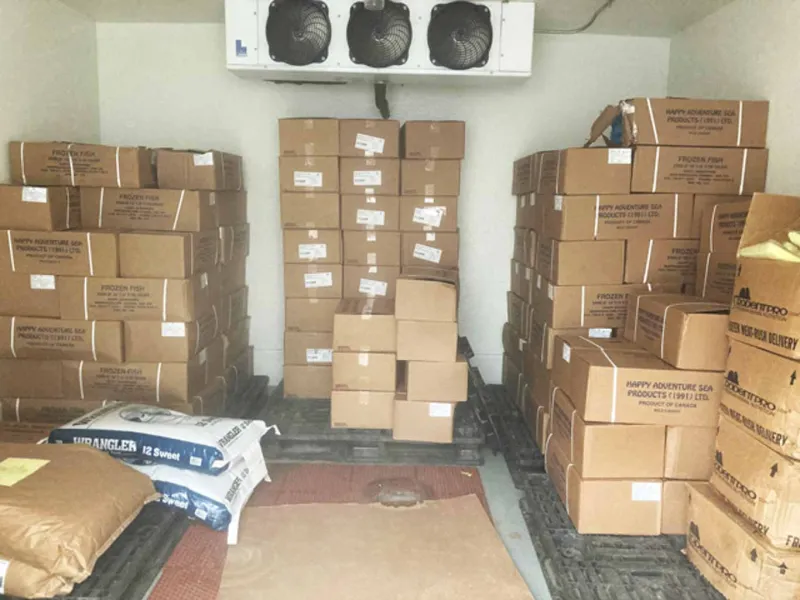
Commissary freezer
The thriving of an animal is a reflection of its nutrition. Here in the Commissary at the North Carolina Zoo, we take great pride in the part we play in caring for the animals. The next time you visit the Zoo, remember that there is a whole team of people whose job is to make sure the animals receive the best nutrition possible.
Want to know more? Check out this video of our Commissary hard at work!



